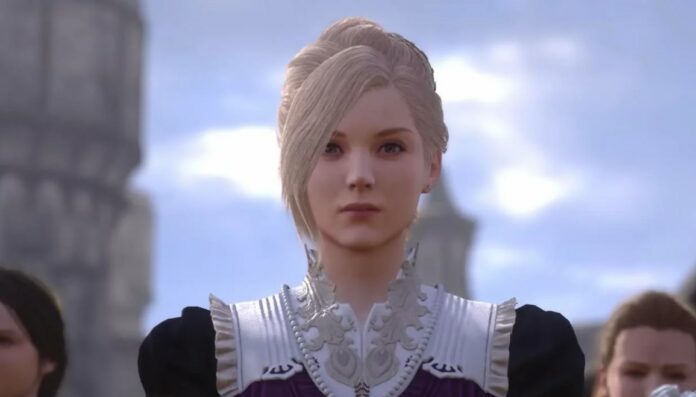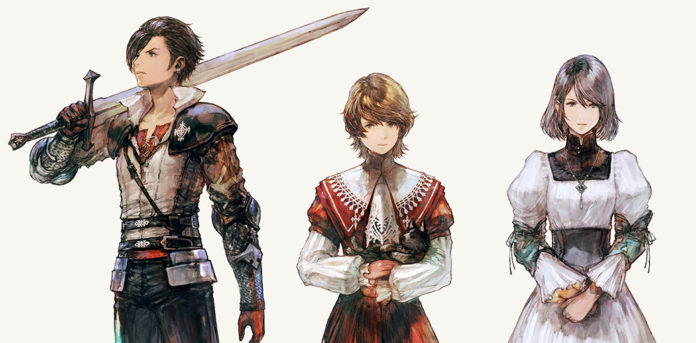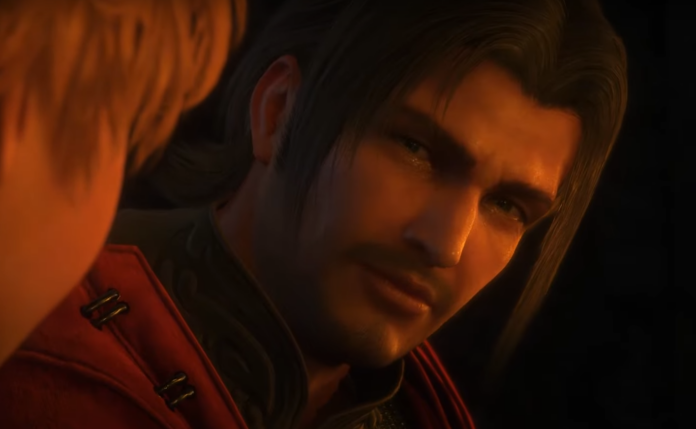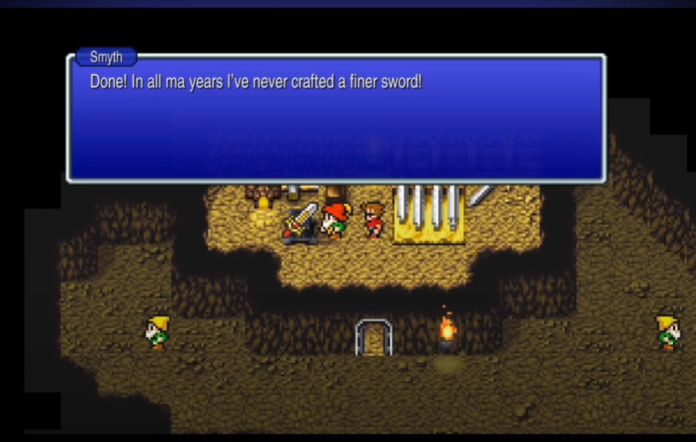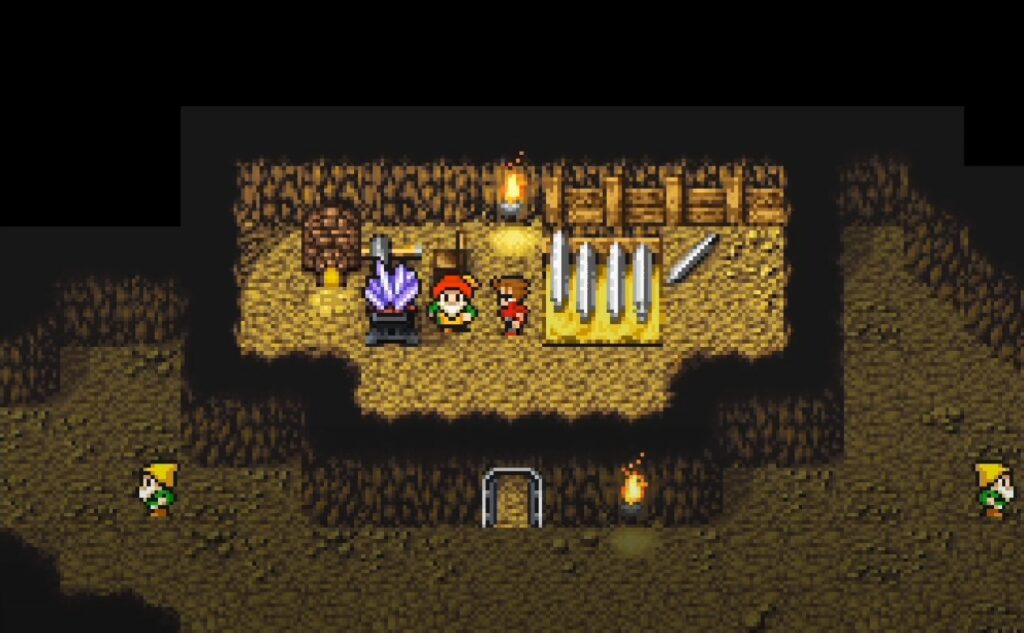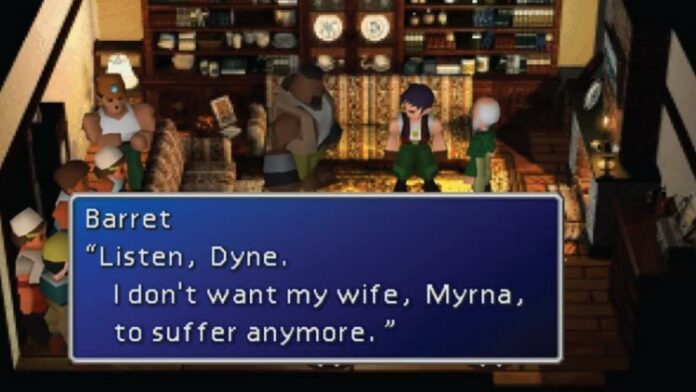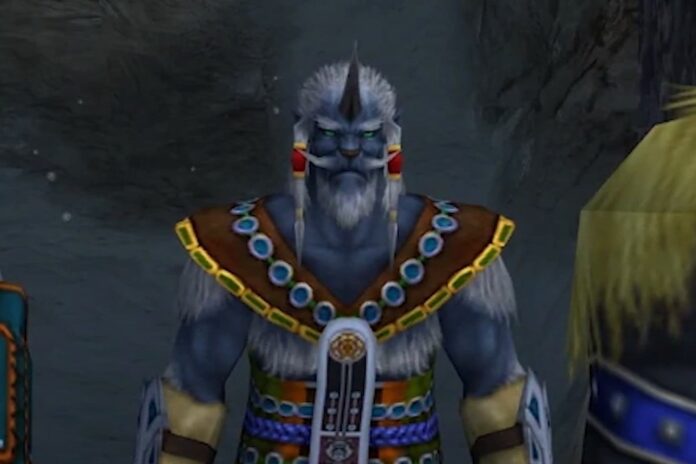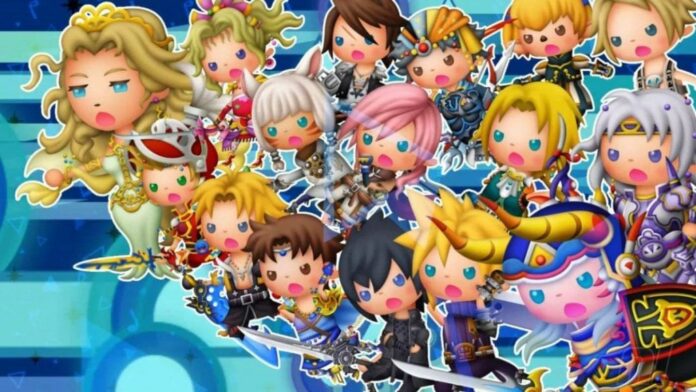Theatrhythm Final Bar Line is the latest iteration of the Theatrhythm sub-franchise, which over the past 13 years has focussed on celebrating the music of Final Fantasy.
For this latest entry, which is part of the Final Fantasy 35th Anniversary celebration, a ton of new gameplay mechanics have been introduced and the song selection has been greatly expanded.
Throughout this interview, we focussed on a range of topics, including the philosophies behind new gameplay mechanics, such as “Perfect Critical” and the “Supreme” difficulty option. Beyond that, we also touch on the future of Theatrhythm, and the potential for more crossovers with franchises such as NieR, and where they’d like to see Dissidia go in the future.
Final Fantasy Union: In the past you said that the original vision for Theatrhythm came to you when you were working on Advent Children. Thinking back, with games like DDR, Ouendan and even Guitar Hero being so popular many years ago, why do you think it took so long for a final fantasy based music game to be made?
Ichiro Hazama: So actually I think it goes back even further than that. You’re talking about the very first time that I had the idea, or I’d really like to make a game which involved the music of Final Fantasy. I think that was when I was just about, just joined the company [Hazama joined Square in 1998].
We first made the original Theatrhythm was 12 years ago. At the time there was only really one game that had done the thing of having every single Final Fantasy game featured in one game. That was Dissidia.
The biggest challenge, and the thing we really scratched our heads about when we were working out how to do Dissidia, was to get that one consistent visual style that tied together all of the different final fantasy games. So I was discussing that with Tetsuya Nomura and he actually made a proposal to use Monster Octopus, who’s obviously a really great designer. He’d been working on a lot of games before he came to work on Dissidia and proposed that we used him for the visuals.
When I was working on Advent Children, it was pretty much exactly the same time when the original Dissidia came out. So that was when I saw Dissidia and what had been done with that. And it reignited the idea in my head. Yeah, it’d be great to do an all final fantasy kind of rhythm game.
So that was when I came back to the idea as it was.
Final Fantasy Union: In relation to Final Bar Line, you’ve mentioned in a previous interview that development started around two years ago after you’d finished working on Kingdom Hearts: Melody of Memory.
Who was responsible for proposing the new vision or was it more of a collective yearning. And was it planned to be part of the 35th Anniversary?
Masanobu Suzui: I think we’ve both got our own individual perspective on it, so I’ll go first.
So I think the development team and from my perspective as part of that team was, we’d essentially been working on using the Unity Engine, which was a new engine at the time, making rhythm games for about three years. At that point, we’d done Theatrhythm All-Star Carnival, the arcade game, which only came out in Japan, and we moved straight on there working on Melody of Memory. So we’d had a lot of experience, a lot of built up, a lot of know-how, how to make rhythm action games using that new engine. And when it came then to what do we do next? I thought I’d like to really use that experience and push it to make a new Theatrhythm game.
That’s when we took that idea to Mr. Hazama and that was what became Final Bar Line.
Hazama: What he says there is absolutely correct. The original proposal for the game did come from Mr. Suzui and his team. So slightly afterwards when we got thinking about it a bit more that we decided to make it a 35th anniversary title cause we felt, obviously the original Theatrhythm was a 25th anniversary title. And then considering moving into the 35th anniversary we felt this is a suitable game to release in terms of the volume of gameplay and the gameplay systems that we’re putting in there.
Final Fantasy Union: You mentioned All-Star Carnival there. It’s clear that Final Bar line builds upon the gameplay of All-Star Carnival, but this time there’s a much more heavy emphasis on RPG elements. You’ve got super bosses even included.. What was behind the shift and why wasn’t it possible to have that level of depth until now?
Suzui: That’s an awesome question. You understand the heart and feelings of developers that’s brilliant.
So All-Star Carnival was a game that was only released in Japan, and unfortunately fans of the series from abroad never really got to enjoy it. But we did have the original two Theatrhythm games, the first one in Curtain Call. Those were on 3DS, and obviously they were released and enjoyed by people worldwide
So when it came to working on Final Bar Line, I definitely wanted to use the experience we gained in making All-Star Carnival and all the know-how that we collected from developing it. But because that was not something that was released worldwide, I thought what the fans would really want to see would be basically the sequel to Curtain Call.
And so I used that for the technical side, but I set out in terms of what we want to do to make it that sequel to Curtain Call.
The type of game that we are looking forward to develop there is slightly different. With the arcade game it’s very much focused on skill and people who play rhythm action games and want to get better at them – it’s aimed at that kind of audience. But for a home console game, it’s a different kind of thing people are looking for. You want as many different people as possible to be able to play it and enjoy it, and that’s where the RPG elements come in and the various different difficulties in the rhythm game part of it itself. So that was a conscious choice in how. Aimed the game plan who it was made for.
I can still remember actually the initial discussions we had on that. Mr. Hazama here, he really is a fan of those kinds of RPG game elements. We got discussing it and got excited about it, thinking “oh yeah, we should make it have that real strategy element, that deep tactical element where you like, choose your party, you level up your party, you choose skills, and you work out the best combinations and then use them to defeat monsters.”.
And so we both felt that’s what we’d want to see in the game and then decide to add that.
So do you think we did a good job on that?
Hazama: Why are you asking me? (laughs)
I think we did do a good job and we managed to realize what we wanted to achieve there. I think up until Curtain Call the nature of the party composition mechanics and the way you thought about that was really all about how do I make it most efficient to earn experience points. That was pretty much the focus.
The depth of the strategic elements of the RPG elements in Final Bar Line are that one or two levels higher really than we saw before. Now it’s a lot more about “what party do I form?” We’ve got an elemental affinity system, and it makes you think “how do I defeat this boss within the time before the song ends?”
Obviously Mr. Suzui’s team put some super powerful bosses in there, and it now is really strategic about working out well, who do I have on my team to defeat them in the time that I have.
Suzui: There’s also no CP in the game now.
We felt that the CP system was restricting the freedom in players’ choices there. You don’t have them now. You can be really free in who you choose. So again, on top of that, there’s other options. You don’t have to have a party of four as well. You can play with a party of three characters, two characters. You can even have one on their own if you want. And so that kind of open ups the idea of people who like to restrict their play and challenge themselves with challenge mode.
Final Fantasy Union: With a shift towards button input it feels like there’s actually been a big evolution with the gameplay; it feels much more complicated now in terms of the different levels of input. Who came up with a decision though, to make a distinction between “Critical” and “Perfect Critical” and why did they feel though it was necessary?
Suzui: So when you get the 9,999,999 score, it initiates what’s called relaunch [Perfect Score]. It was actually comparatively easier to get it in the Theatrhythm games than it is to other rhythm games out there.
So it’s essentially like a system of rewards for players of different levels. Like I say the original Theatrhythm is actually quite a lot easier to get that level for, even if you’re not a super skillful player. You want to add in something extra to praise and reward the people who really are good at the game, so that’s where the extra super critical comes in there.
If you manage to get lots of that, then it’s saying, yeah, you really are the top level of skill player, but for people who aren’t quite that level, you still want to encourage them, motivate them, and say, no, you did a good job there. And it’s a similar kind of thing, but not quite at the same level, which is where the regular critical comes in.
Yeah, I just wanna say to people that, don’t worry if you’re not getting the super criticals, you don’t have to really, it’s still really good to get the regular criticals. And again, you don’t have to wait for the SSS score on every single stage. SS, that’s a really good score too.
Again, you don’t have to worry either about going for the top difficulty levels the ultimate difficulty level. We only play up to expert ourselves. We can’t really do anything higher than that. So you can have fun at any level. Don’t worry.
I also don’t think it’s a good idea to compare your performance to what you did when you played Curtain Call. Just look at it as its own standard really. And I think aiming for SSS is a really good benchmark for a good player.
Final Fantasy Union: On that note, for people that really want to challenge themselves, you’ve now included Supreme difficulty, but only for a small selection of tracks. How did you decide which tracks were given that extra difficulty setting, and which song do you think is the hardest to get a perfect score on?
Suzui: Okay. The important factor in deciding that is the number of individual sounds which you get in a track. If there aren’t many sounds in a track, you can’t make an extreme track.
The kinds of songs which actually lend themselves to being made into the extreme level are, fast, first of all, and they’ve gotta have a very high tempo and have lots of complicated, subtle sounds within them.
So essentially, I’m not sure we looked at it from a perspective of this one isn’t suitable or it’s not really going in the right direction to be made to make it as an extreme one. It’s more a case of when we looked at them, oh, this really is one that would work for the highest difficulty level let’s make it at that level.
So actually when we made All-Star Carnival, we deliberately had some special arrangements made of some of the songs to make them suitable to be the extreme difficulty level tracks. So any of the ones in Final Bar Line, which has arrangement from All-Star Carnival, you can generally tell by that those are gonna be the ones that are the most difficult. The metrics used in musical terms is BPM and by doubling that over what it would be in the standard versions of the track, that really makes it that much harder to play.
It was very famous in Japan actually. The Big Bridge theme was one of the real hard ones to play. It’s the All-Star Carnival arrangement of the Big Bridge theme.
There’s actually 16 different difficulty levels. You see the number next to the track to show what level it is. If you play anything on level 16, that’s super dangerous, you probably shouldn’t even touch those!
We’ve also made one extra track, the Final Bar Line Battle Medley, which is specifically created for this game. That’s also a really hard one, it’s incredibly difficult. And what it is basically a medley of all of the battle songs from the various different Final Fantasies over the years, not just the standard battle music. There’s some other variant battle music mixed there and there as well, but it’s got the real representative phrases from each of those, every single one featured in, in that three minute track.
You think you can do it?
Final Fantasy Union: We can give it a go… (looks nervous). One thing we can’t wait to see happen, is them playing that arrangement at Distant Worlds!
Hazama / Suzui: (laughs)
Final Fantasy Union: You mentioned you only play on a certain difficulty level in the team, but who’s the best player on the team?
Suzui: Okay. I say the best guy. There’s one of our programmers, a guy called Yamasaki, and he’s really amazing. What you’re seeing in the development team now is there’s like a changing of the generations. With all of the younger people coming in now. Yeah. They’re beating us silly.
That guy [Yamasaki], he told us a while back that, yeah, he basically spent half of his life playing rhythm games in arcades ever since he was a student. So he really is good at them.
His usual job is to do the programming for Final Bar Line, but when we’ve created one of the top difficulty level stages, we actually take him out there as right now you’re gonna test that for us.
Final Fantasy Union: He’s your super soldier!
Suzui: He’s just so good that you look at his playing and you think, is that working automatically? Have we got like a loop program on him?
Final Fantasy Union: You’ve announced a couple of DLC packs already, but are there any plans to introduce tracks for Final Fantasy XVI once that’s out, or any plans to introduce tracks for Endwalker?
Hazama: Honest answer, we are not considering that at the moment.
Currently we haven’t finished working on the DLC that we’ve got planned already. Before we want to think about anything else we want to get everything that we’ve got on the table finished right now – that’s where we are at the moment. .
The other thing is in terms of creating stages for Theatrhythm based on another game, on another Final Fantasy game. As you see in all the little details that his [Suzui] team puts into it, we really need to know what that game is about before we play it. So what the really memorable music tracks are and what the real memorable scenes are so we can make the backgrounds to them properly.
Neither myself or Mr. Suzui I think know a lot about Final Fantasy XVI at the moment. I think all the information that we have, it’s probably not much different to what you know about Final Fantasy XVI, so we really need to play it first before we even think about what to include from it.
Final Fantasy Union: Yeah, that is one of the best, the Easter Eggs that you find the levels.
Suzui: Thank you. Thank you!
Hazama: You really picking up on all the points that he [Suzui] loves hearing about. You got like the RPG elements and the little Easter eggs and yeah, it was all put in because that’s what he loves.
Suzui: I’m just so happy to hear these kind of things. It’s not just me. I’m here as the representative for the development team of about 50 people and we all love the game so much that it’s really reassuring. It’s really inspiring to see that what we tried to do, what we trying to communicate has reached the fans here in England.
Once you guys have gone away today, you’ve made this video about it and saying these kinds of things, I’d love to show this to the development team so they can see that too.
Final Fantasy Union: You mentioned in Dengeki Magazine that Final Bar Line has been used to convey to you’re treating this as the final Theatrhythm game. But you also said that with Curtain Call.
You’ve therefore left the door open a little bit by saying it’s what fans want. Does that mean that if there’s a lot of demand that maybe we’ll see a new, the after game for the 45th anniversary as well, perhaps creating a 10-year cycle?
Hazama: I’ll say it. If that did happen, I think that’d be a great thing.
Actually, I was speaking to Yoshinori Kitase about this a little while back and he said, similar thing. He said “if this one does well, do you wanna make another one?” (laughs)
But yeah I gave the same answer. I said no, this is our intention. This is gonna be the final one. We’re putting everything into it to be the last culmination of the series.
But having said this it’s not a bad thing, it’s not a sad development or anything. But I think in 10 years time, if another Theatrhythm is going to be made, it will probably be the next generation of creators that makes it and not us.
So if in 10 years time there’s a new upcoming creator and he comes and says I remember Theatrhythm, that game from 10 years ago. I really love that game. I’d love to make a new version of it. We are not going to complain. We’re not gonna say anything about it. The only thing we have to say to that guy is go ahead, do your best. Make it!
Final Fantasy Union: You have been working together for over a decade now, and you’ve worked on Final Fantasy, Dragon Quest and Kingdom Hearts. With the Final Fantasy chapter now closed, and I think you mentioned that you would like to see Theatrhythm kind of become its own IP, do you have a vision for what that might be and is there an appetite to create like a NieR game, for example, considering how popular that music is?
Hazama: It’s not the case that we’ve directly gone to the other IP holds and asked them to do something like this. I think it’s pretty much the same as I said in the last interview, is if that would happen someday [Theatrhythm NieR], if it could somehow be realized, I think it’d be a really great thing. So I’d love to see that.
I think I remember from the previous questions, you guys really remember the stuff we said when we were younger men!
Suzui: Can you read Japanese articles? You obviously got that from the Dengeki online article, which was in Japanese!
Final Fantasy Union: We can understand a little bit, and get help from online translators!
Suzui: I’m just really happy for you and what you guys are doing. This is a really great interview and I really wanna answer directly and honestly about things. You’ve done your homework, you’ve researched it, you’ve looked at everything and you’re bringing all that knowledge here to the interview. So it’s really great. Thanks for that.
Final Fantasy Union: Thank you! And on that note, Yoko Taro always says he wants to just do things to make money. It sounds like Theatrhythm NieR is a no brainer!
Hazama / Suzui: (claps and cheers)
Suzui: I think Theatrhythm Yoko Taro might be a good one.
That’d be awesome! We could get him to write a story for it and it’ll be this weird messed up universe involving all of the previous games that Yoko Taro made. That’d be a great game. I think the Theatrhythm world would just be destroyed.
You could get the Postapocalyptic Theatrhythm of 10,000 years later. I think at that point, it’s a good idea to stop!
Final Fantasy Union: He’ll just throw in random buttons everywhere. In Drakengard there was even a rhythm segment where the cues were hidden!
Suzui: Yeah he likes bullying people with that. It is a great thing he does, he like breaks your expectations completely.
Final Fantasy Union: Hazama-san, within the properties you look after it feels like there’s a willingness to connect things. There’s a connection between Theatrhythm and Dissidia with Chaos and Cosmos. Stranger Paradise is now being connected to Dissidia as well. Everything seems to come back to Dissidia. But with Dissidia NT not landing probably as well as maybe have wanted, even though Opera Omnia is still doing well, do you feel as though there’s unfinished business with the Dissidia franchise and do you have any kind of aspirations to make a proper successor to Duodecim?
Hazama: Okay, so there’s probably two things that I should answer about that.
First of all, in terms of putting links and connections between the games that we make I don’t particularly pay too much attention to that, and it’s not deliberate on my part. I think if there is connections like that, you probably have to talk to our creative Director, Tetsuya Nomura about those, and the guy who’s the producer of Opera Omnia and Final Fantasy Origins, he’s a great guy called Jin Fujiwara. If you ever get a chance to talk to those guys, I think they may be able to tell you a bit more about it. From my personal side though, I don’t, I’m not really aware of any deliberate connections
In terms of the other part of the question though, as to whether I’d like to do another Dissidia. I think maybe more than wanting to do it myself. I want someone else to do it.
I definitely want someone to take up the reins and continue to push that. We should always be challenging the industry and trying to push and do new things with Dissidia. It would be a bit weird if we didn’t. It has that whole world, it’s got its own setting and the idea of doing stuff through the medium of a battle game as well. That’s something that we really couldn’t do outside of Dissidia. So I want to see different creators just keep pushing and trying to take on new challenges with Dissidia.
Final Fantasy Union: As a final note, we just wanted to say thank you to both of you for your efforts. And for you in particular Hazama-san; as you guys probably picked up we spend a lot of time looking back at the past history and we just wanted to say another note of appreciation because we know that over the years you’ve worked in a lot of experimental games All The Bravest, World Wide Words and Airborne Brigade. These are games that we didn’t necessarily get in the West.
But yea, we just wanted to say thanks for just constantly trying to experiment, for trying new things, even if they don’t always work out. It’s just good that there’s someone trying different things.
Hazama: Yeah, I probably shouldn’t say too much about it. I might get full of myself here, but I think you can look at it in two ways. I think that having myself wanting to do that and having a company that lets me do that is a great thing, but they’re [Square Enix] probably a bit messed up in the head!
Thank you so much Hazama-san and Suzui-san!


